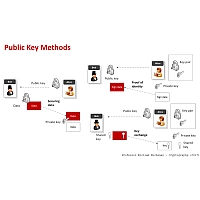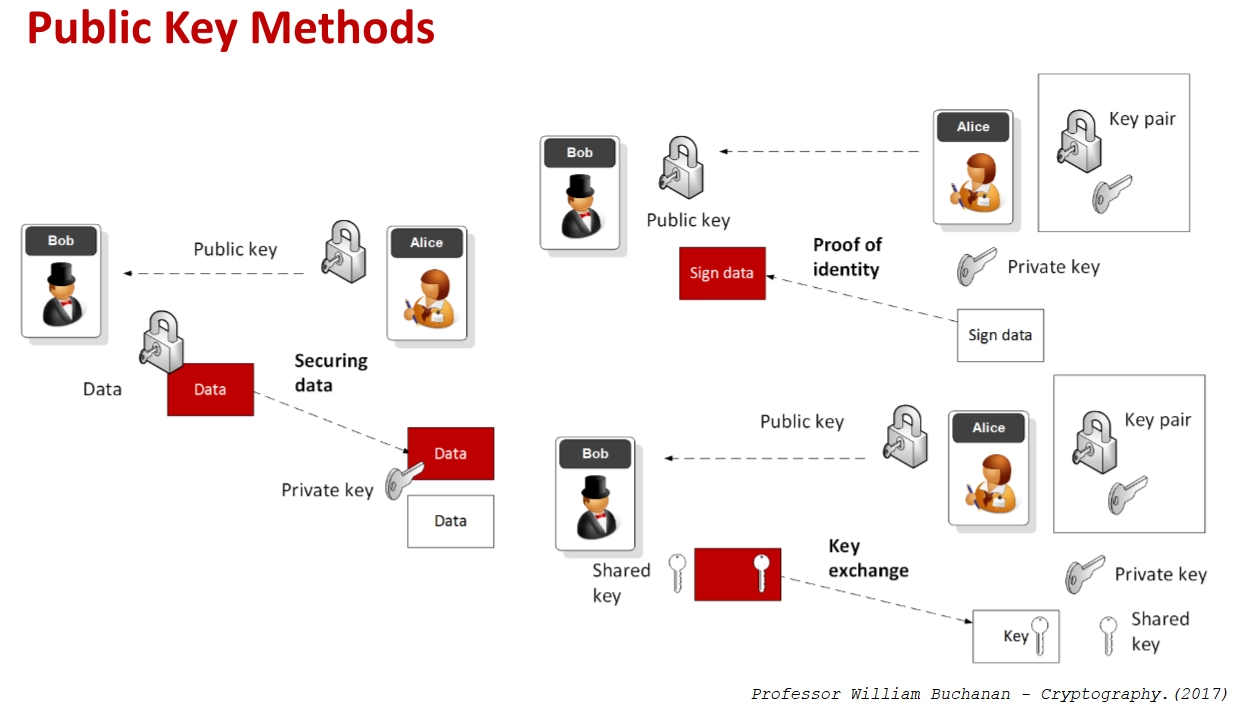Ralph C. Merkle was born on February 2, 1952. He was one of the inventors of public key cryptography – a security methodology that today’s internet and communications rely on heavily.
The discovery and publishing dates for public key cryptography gets a bit confusing – I am sure a white board and flow chart would help. But basically Merkle’s work – eventually published in 1979 – was used by people such as Whitfield Diffie and Martin Hellman (Diffie Hellman key exchange) to develop methods for exchanging encrypted information, without a party-in-the-middle, being able to determine the encryption key and so being able to read the secret communication.
This was done by having two keys to the encryption process. A public key, that anyone or any computer or program can have access to – and a private key, only known to the user. Anything encrypted by using the public key can only be decrypted by using the secret private key by the user. As you can see from the diagram above, the public/private key combination can be used to:
- Securing Information
- Proof of identity
- Encryption key exchange
All tasks that make our digital world more secure.
Clive Catton MSc (Cyber Security) – by-line and other articles
p.s.
There is a twist to this story, Merkle did not discover public key cryptography first – he just got the credit. It had been discovered (although not implemented) several years previously, in 1970 by James Ellis, a cryptographer working at at the Government Communications Headquarters (GCHQ) – but that discovery was classified.
References
Merkle, R. C. (1979). Secrecy, authentication, and public key systems. Stanford university.
Buchanan, W. J. (2017). Cryptography. Stylus Publishing, LLC. (Bill Buchanan (napier.ac.uk)
Further Reading
MSc Advanced Security & Digital Forensics Postgraduate Distance learning (napier.ac.uk)



